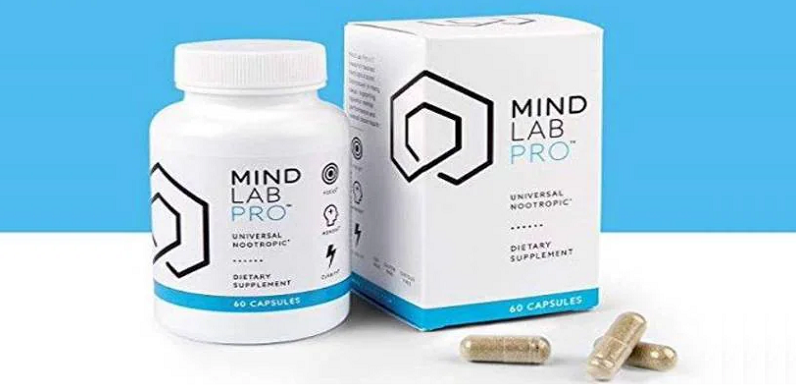
This is the story of how I overcame my startup’s toughest roadblock and sparked a wave of innovation with the help of nootropics and a fresh approach to problem-solving.
Contents
The Startup Grind
When I launched my startup, I knew it wouldn’t be easy. Late nights, constant uncertainty, and endless problem-solving were just part of the package. But nothing could’ve prepared me for the challenge we faced six months in—a product development roadblock that threatened to derail everything we’d built.
Our app, designed to simplify project management for small businesses, was functional but not user-friendly. Beta testers loved the concept but found the interface clunky and unintuitive. The feedback was consistent: “It’s a great idea, but it’s hard to use.” My co-founder and I were stuck. We knew what needed to change but couldn’t figure out how to execute it.
Every brainstorming session ended in frustration. We’d throw out ideas, shoot them down, and leave the office feeling defeated. “We’re running out of time,” my co-founder said one evening. He wasn’t wrong—if we couldn’t solve this problem, our startup would flop before it even got off the ground.
Looking for Answers
One night, after yet another unproductive brainstorming session, I found myself scrolling through a productivity forum. A thread about nootropics caught my eye: “Boost Your Focus and Creativity with Cognitive Enhancers.” Intrigued, I started reading.
The testimonials were compelling. Entrepreneurs, developers, and creatives shared stories about how nootropics had helped them think more clearly, stay focused, and overcome mental roadblocks. The idea of a cognitive boost was tempting. I had nothing to lose, so I decided to give it a shot.
After researching various ingredients, I ordered a nootropic blend designed for focus and creativity. The formula included Lion’s Mane for neuroplasticity, L-Theanine for calm focus, and Rhodiola Rosea for stress resilience. I was cautiously optimistic but knew that supplements alone wouldn’t solve my problems. I also committed to creating a more structured approach to brainstorming and problem-solving.
The Experiment Begins
When the nootropics arrived, I started taking one capsule each morning with a glass of water. I paired this with a new routine: setting aside two hours each day for focused, distraction-free brainstorming. My phone went on airplane mode, and I used noise-canceling headphones to block out distractions. The first few sessions were tough—I still felt stuck, and the ideas weren’t flowing.
But by the end of the first week, I noticed a shift. My thoughts felt clearer, and I was able to focus for longer periods without getting frustrated. During one brainstorming session, an idea popped into my head—an unconventional approach to simplifying our app’s navigation. It wasn’t fully formed, but it felt like a breakthrough. I jotted it down and shared it with my co-founder later that day.
“This could work,” he said, his eyes lighting up. It was the first glimmer of hope we’d had in weeks.
The Breakthrough
Two weeks into the experiment, I had my breakthrough moment. It was a Saturday morning, and I’d set aside the entire day to focus on the app’s redesign. I started the day with my nootropic, brewed a strong cup of coffee, and dove in. Hours flew by as I sketched wireframes, tested workflows, and refined the navigation system.
By the end of the day, I had a fully fleshed-out prototype. It was simple, intuitive, and addressed every pain point our beta testers had mentioned. I felt a rush of excitement—this was the solution we’d been searching for.
The following week, we presented the prototype to our development team and beta testers. The response was overwhelmingly positive. “This is exactly what we needed,” one tester said. For the first time in months, I felt like we were back on track.
Building Momentum
That breakthrough marked a turning point for our startup. The redesigned app launched two months later, and the feedback was phenomenal. Our user base grew steadily, and the app earned glowing reviews for its ease of use and innovative features. Investors took notice, and we secured additional funding to scale the business.
Personally, I felt like a new person. The combination of nootropics and structured brainstorming had transformed the way I approached problems. I was more confident, focused, and resilient, even in the face of setbacks. Challenges that once felt insurmountable now seemed like opportunities to innovate.
One of the most rewarding moments came during a team meeting when my co-founder said, “None of this would’ve happened without your breakthrough idea.” It was a reminder of how far we’d come—and how much potential we had to keep growing.
Scientific Insights and Research
The success I experienced isn’t just anecdotal—it’s backed by science. Nootropics like Lion’s Mane have been shown to promote the production of nerve growth factor (NGF), which supports neuroplasticity. This enhances the brain’s ability to form new connections, making it easier to think creatively and solve complex problems.
Similarly, L-Theanine, often paired with caffeine, promotes a state of calm focus by increasing alpha brain wave activity. This mental state is associated with improved problem-solving and innovative thinking, as it allows the mind to process information more efficiently without becoming overwhelmed.
Additionally, Rhodiola Rosea, an adaptogen, has been shown to reduce stress and fatigue, both of which can hinder cognitive performance. By helping the brain stay calm and energized, Rhodiola creates the ideal environment for breakthroughs and sustained focus.
When combined with intentional habits like structured brainstorming, nootropics can provide the cognitive edge needed to tackle even the toughest challenges. While they’re not a magic solution, they’re a powerful tool for entrepreneurs, creatives, and anyone looking to unlock their full potential.

